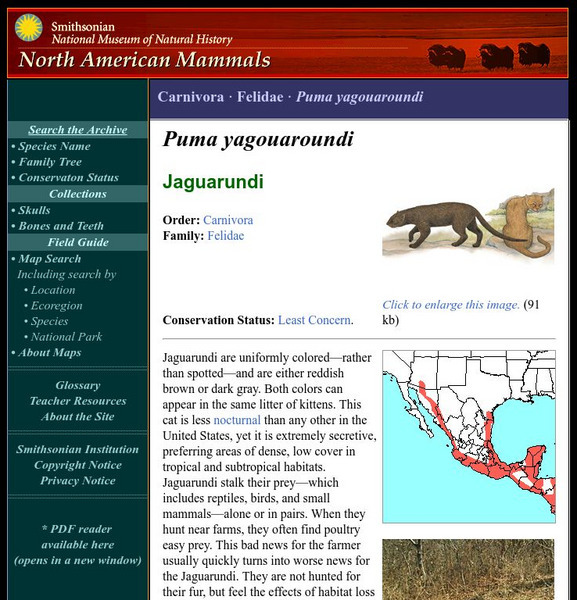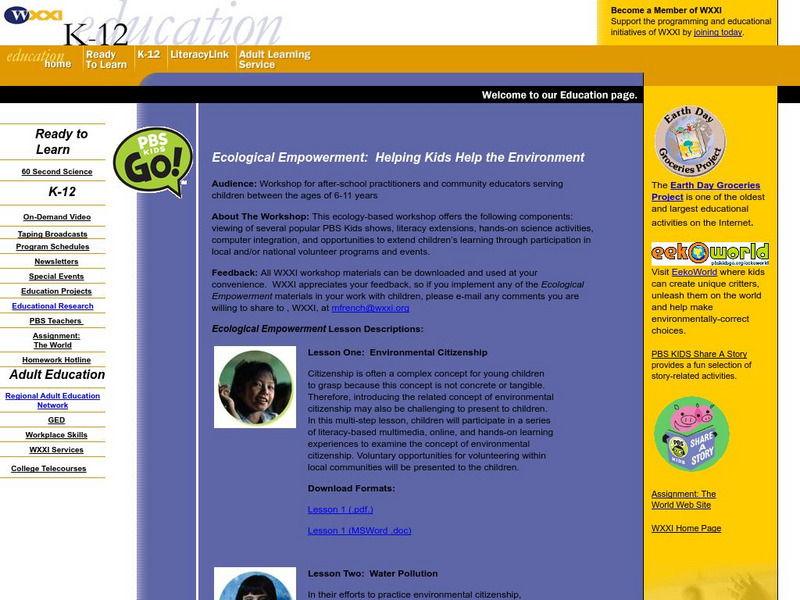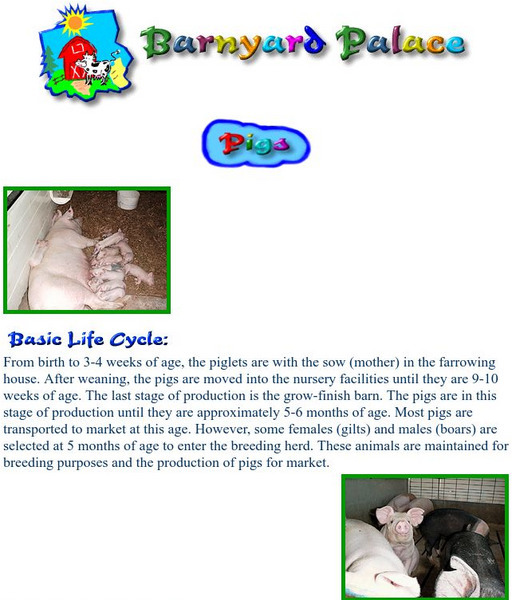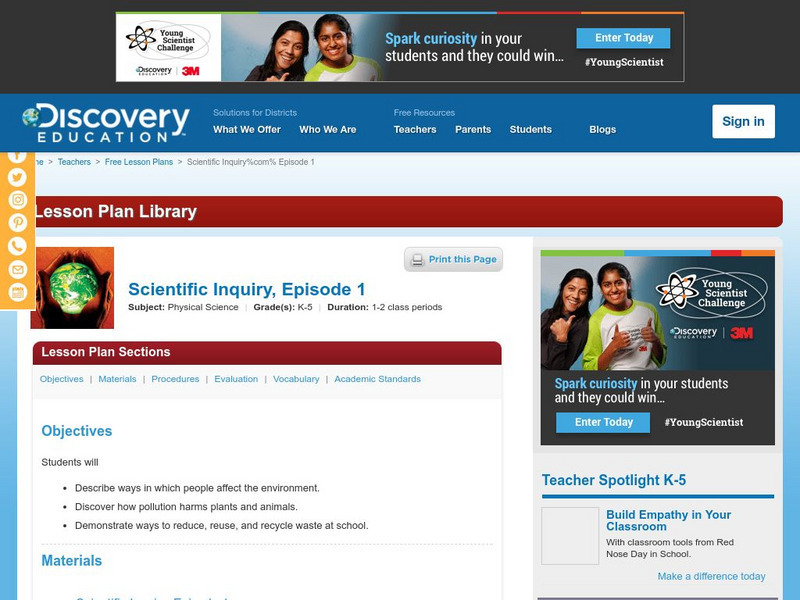Smithsonian Institution
National Museum of Natural History: American Mammals: Meadow Vole
Meadow Voles have a remarkable reproductive output: they are the world's most prolific mammals. Females can breed when they are a month old and produce litters of 3-10 pups every three weeks for the rest of their lives. Learn more about...
Smithsonian Institution
National Museum of Natural History: American Mammals: Jaguarundi
Jaguarundi are uniformly colored, rather than spotted, and are either reddish brown or dark gray. Both colors can appear in the same litter of kittens. Learn more about the Puma yaguarondi (Herpailurus yaguarondi), more commonly known as...
Read Works
Read Works: A Clean Park
[Free Registration/Login Required] A literary text about a boy named Tyler who decides to do his part to help keep his community park clean. A question sheet is available to help students build skills in reading comprehension.
PBS
Pbs Teachers: Helping Kids Help the Environment
Define and explore the concept of environmental citizenship through a series of literacy-based multimedia, online and hands-on learning experiences. Discover how responsible citizens can help protect their local communities by...
Kidport
Pollution
A short discussion of several different types of pollution and of the harm that it can do to the Earth. Includes a two-question reading-comprehension quiz.
HotChalk
Hot Chalk: Lesson Plans Page: Aquatic Wildlife and Pollution
This lesson plan is designed to teach young children about healthy and hazardous marine and freshwater environments and be able to describe the effects of the pollution of plastics on wildlife.
Other
Barnyard Palace: Pigs
This is a site for the basic information on pigs. It gives you the life cycle, why they are raised, facts about their diets, the different species. Along with all that there are a few more interesting facts.
Curated OER
Educational Technology Clearinghouse: Clip Art Etc: Lectica
Lectica was a kind of couch or litter, in which persons, in a lying position, were carried from one place to another. They were used for carrying the dead as well as the living. The Greek lectica consisted of a bed or mattress, and a...
Discovery Education
Discovery Education: Scientific Inquiry, Episode 1
In this classroom activity, learners discuss how people and pollution affect the environment. Then they demonstrate ways to recycle, reduce, and reuse.
HotChalk
Hot Chalk: Lesson Plans Page: Causes of Pollution
This lesson plan is designed to teach young children identify the types of pollution, the sources of the pollution, and how they can protect the environment from further pollutants.
Curated OER
Mother & Cubs
This webpage provides basic information and photos of the Timber Wolf. Its simple format and language is great for a large range of students.
Other popular searches
- Litter Bug
- Pick of the Litter
- Litter in the Environment
- Ocean Litter
- Litter Critters
- Litter Survey
- Beach Litter
- Litter Management
- Litter Science
- Litter Minimization
- Photo Essay on Littering
- Identifying Litter









